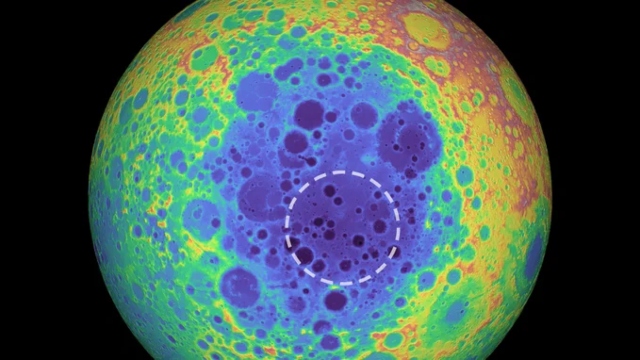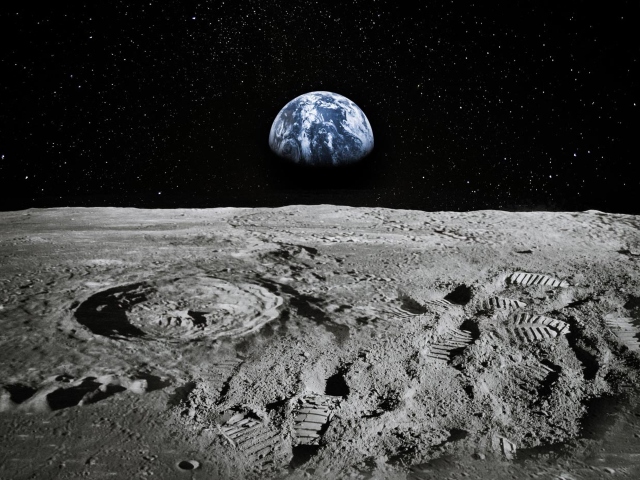
-
Enormous Structure Found Hiding Under The Surface Of The Moon
04 Aug 2023 by Heinrich in Tech/Sci, World
[imagesource:setiinstitute]
No, it’s not an alien base or secret Chinese laboratory developing a US-killing raygun. But you can bet the find will give countries involved in the ‘new race to the moon’ even more reason to go.
It’s all about resources, and in this case a massive amount of it.
The Moon has one of the largest preserved craters in the Solar System, the Aitken Basin, located on the far side of our satellite. The area is central to many investigations, with India’s first lunar lander aiming for the region and Artemis 3 hoping to land humans there soon.
The reason for all this interest is a massive anomaly astronomers found hiding under its surface in 2019. Planetary scientists discovered a structure that weighs approximately 2.18 billion billion kilograms, and stretches for more than 300 kilometers in depth.
They now suspect it may contain metal from the asteroid that formed the Aitken Basin. Peter B. James from Baylor University perhaps sums it up the best: “Imagine taking a pile of metal five times larger than the Big Island of Hawaii and burying it underground. That’s roughly how much mass we detected.”
[image:ifls/twitter]
For our resource-hungry world, this is like hitting the jackpot, if not for the fact that it’s on the moon.
The team used data from spacecrafts that make up NASA’s Gravity Recovery and Interior Laboratory (GRAIL) mission, which measures subtle changes in the gravitational field of the Moon. These changes help scientists understand the inner composition of our little moon.
As it turns out, the mass they measured is enough to weigh the entire basin floor downward by almost a kilometer. The crater is roughly 2 500 kilometers in diameter, so that’s one hell of a divot.
“When we combined that with lunar topography data from the Lunar Reconnaissance Orbiter, we discovered the unexpectedly large amount of mass hundreds of miles underneath the South Pole-Aitken basin.”
“One of the explanations of this extra mass is that the metal from the asteroid that formed this crater is still embedded in the Moon’s mantle.”
One of the favourite explanations among scientists is an asteroid that hit roughly 4 billion years ago, but instead of sinking to the core, it remained lodged in the mantle.
The South Pole is not the only part of the Moon hiding huge structures underneath its surface. Astronomers announced the discovery of a massive heat-emitting mass under the Compton and Belkovich craters on the far side of the Moon just last month.
This reminds me of a scene in The Time Machine by H.G. Wells where the intrepid traveller arrives in a future where the moon has been mined to the point where it crumbles and falls to earth.
But of course that’s just a fiction story.
[source:ifls]
Latest News
-
Game, Seth, Match – Goodbye 2024
Hey Guys - thought I’d just give a quick reach-around and say a big thank you to our rea...
-
Breakfast Of Champions: Hollywoodbets Kenilworth Racecourse Breakfast Gallops Is Back!
[imagesource:CapeRacing] For a unique breakfast experience combining the thrill of hors...
-
Need NYE Plans? Cafe Caprice’s Night Of Enchantment Masquerade Party Could Do The Trick
[imagesource:howler] If you're still stumped about what to do to ring in the new year -...
-
Buckingham Palace Steps In After Staff Christmas Party Spirals Out Of Control
[imagesource:maxandeli/facebook] It's not just in corporate that staff parties get a li...
-
Designer Babies Are Running Into Trouble As Teens, Grappling With Being ‘Experiments’
[imagesource:here] Imagine being born with the weight of your parents’ version of per...
-






























